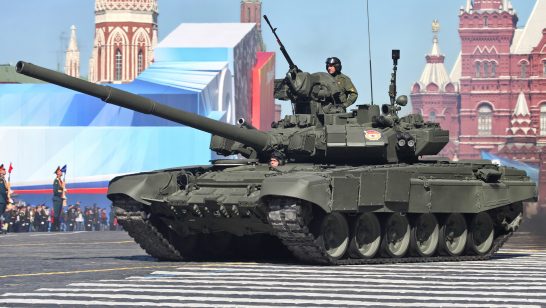
Despite continuous disagreements, the relationship is beneficial both ways
President Obama’s decision to cancel his planned summit with Vladimir Putin earlier this month may be understandable, but as recent developments on Syria demonstrate, this must not be allowed to become a total break in relations. There is too much at stake on both sides.
While the Snowden affair is only the most recent addition to a long list of issues on which the two sides can’t agree, from arms control and missile defence, to Syria, trade and human rights, there is a larger strategic contex that has to be borne in mind. Russia is a permanent member of the UN Security Council, an important diplomatic player in the Middle East and a key actor in Euro-Atlantic security affairs. It is a partner in P-5 efforts to address nuclear challenges in Iran and the third largest emitter of greenhouse gases in the world, making it central to any global deal to meet that existential threat. And it is a vital supplier of energy to many of the U.S.’s key European trading partners. To pursue core US and wider western interests the U.S. has no choice but to find effective ways of working with Russia, however distasteful it finds the current occupant of the Kremlin.
The good news is that this is in Russia’s long-term interests as much as it is in the West’s. Despite Putin’s anti-American posturing and talk of a new relationship with China, a Eurasion Union, or a BRIC bloc to counter western influence, his foreign policy options are limited.
The BRIC’s do not share enough of a common agenda to become the focal point of a serious Russian foreign policy doctrine. The Eurasion Union, for its part, involving closer ties with Kazakhstan and Belarus, is a sensible approach to relations with close neighbours but also has its limits. Both Belarus and Kazakhstan are wary of losing national sovereignty and being dominated by Russia. The two also have small economies and combined account for only 7 per cent Russia’s global trade, making the Union a modest one at best.
When it comes to relations with China, the dynamics are somewhat reversed. Russia accounts for just 2 per cent of China’s external trade and its attempted pivot to Asia and the Pacific is motivated as much by anxiety over Chinese influence in its sparsely populated east as it is by any desire to pursue a new strategic partnership with Beijing. The Russian-Chinese relationship has its own long history of mistrust of course, and is further constrained today by China’s reducing need for Russian military technology. Despite warm rhetoric, and a shared mutual concern about being hemmed in by US power, China contrasts its own perceived march to superpower status with what it sees as Russian stagnation and economic decline.
Whether he likes it or not, President Putin is the leader of a country who’s population and economic centre is still concentrated in the West. His official military doctrine is dominated by concerns about the United States and NATO. Russia’s economy is stagnating, needs western technology and investment to carry out a badly needed programme of modernisation and consists mainly of hydro-carbon exports, again primarily to the west. Meanwhile, Russian social welfare costs and demands are growing. For both economic and domestic political reasons, therefore, Russia cannot afford a full break-down in relations with the West and a new arms race any more than the West can afford one itself. Putin needs the US and its allies just as much as we all need him.
If the short term politics do condemn the relationship to transactional rather than strategic status, it is also worth remembering that transactional relationships are not insignificant. In recent years, in the absence of any real strategic meeting of minds, the US and Russia have agreed a New START Treaty to cut the strategic nuclear forces of both; an amendment to a Plutonium Management and Disposition Agreement that led to the safe disposal of enough plutonium for seventeen thousand nuclear warheads; and joint measures aimed at bringing Iran’s pursuit of nuclear weapons to a close. The U.S. and Russia also cooperated to secure Russian entry to the World Trade Organisation after 18 years of trying and agreed an over-flight arrangement that as of January 2013 had allowed some 460,000 U.S. military personnel and equipment to cross Russian airspace en route to Afghanistan. Despite the continuous disagreements and the noise in the relationship, all of this has been worth having.
What the leaders of both countries have to realise is that the key challenge in today’s international environment is not the management of a zero-sum struggle for dominance between the major powers but a struggle for order in a world where challenges cross borders and power is diffuse.
The US and Russia must be partners with each other in this endeavour whether they like it or not. Working with others with whom you have profound disagreements is, in fact, inherent to the enterprise. Western leaders seem ready to stomach this when dealing with undemocratic regimes in places like China and Saudi Arabia. A longer term view of what’s at stake and cool heads must prevail in US-Russia relations too.
—
The article was first published in The Independent on 13 August 2013.
The opinions articulated above represent the views of the author(s), and do not necessarily reflect the position of the European Leadership Network or any of its members. The ELN’s aim is to encourage debates that will help develop Europe’s capacity to address the pressing foreign, defence, and security challenges of our time.


